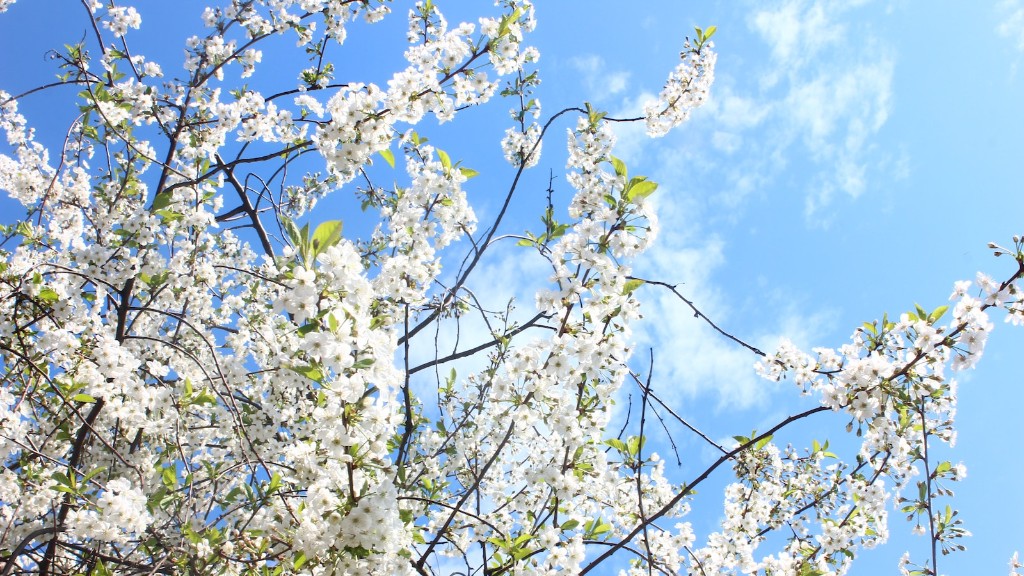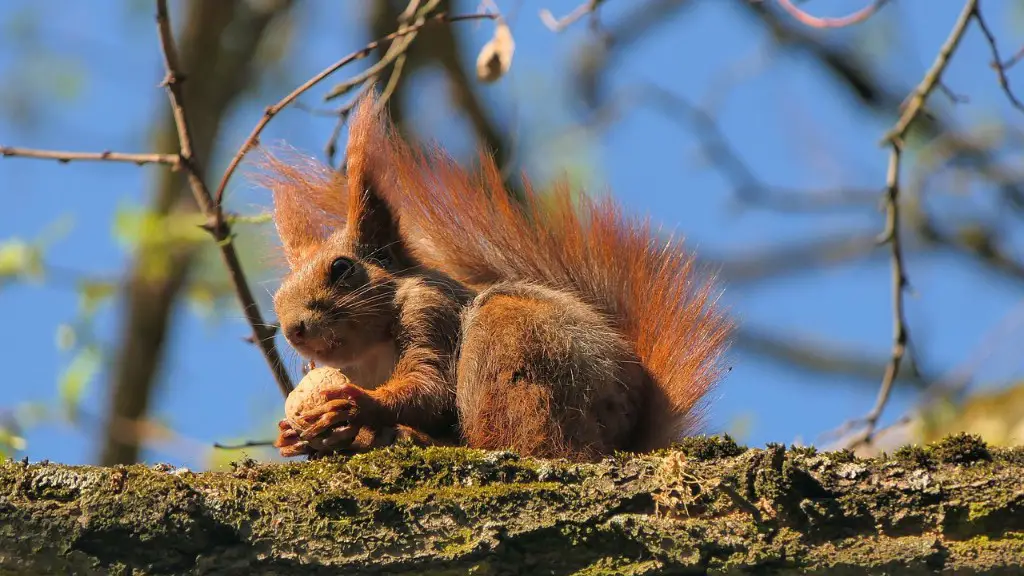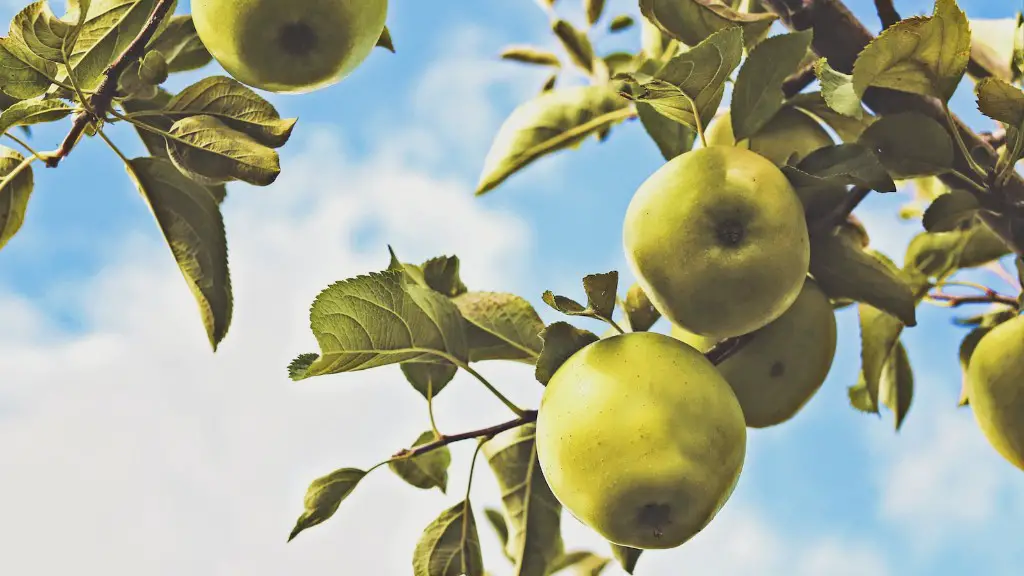Cherry trees provide a beautiful and pristine element to almost any garden. This is why many homeowners strive to plant something special underneath them. There is a wide range of plants that can be planted around cherry trees, each offering their own features and benefits.
In order to determine which type of plants to use for your cherry tree, you first need to assess the growing conditions in which your tree is located. It is important to ensure that whatever you choose is suitable for your conditions and there is no danger of disease or pest infestation. It is also important to take into account the amount of sunlight your tree will be receiving as some plants need more sunlight than others.
One of the most popular plants to use beneath a cherry tree is grass. Grass is a low-maintenance option that looks great and gives the garden a natural feel. It will also help to keep the soil moist and the grass provides a protective layer over the soil. However, if you want something a little bit more exciting, you can opt for annuals and perennials. These offer a range of shapes, sizes, colours and textures which can be used to bring out the beauty of your cherry tree.
Shrubs are also ideal for use in a garden beneath a cherry tree. Shrubs provide height and structure, as well as a splash of colour. They also provide an excellent habitat for wildlife, including birds and small mammals. Some popular shrubs include lilac, forsythia and rhododendron. It is important to remember to add mulch to your soil to help retain moisture and to improve the overall fertility of the soil.
Groundcovers are another great option for planting around a cherry tree. They provide both beauty and function and can help to reduce the amount of weeding you need to do. Ground covers like lamium, sedum, vinca and candytuft are all suitable for use beneath a cherry tree. They will help to keep the soil moist and suppress weeds while looking impressive too.
If you would like to container plant around a cherry tree, you can choose a range of plants such as azaleas, begonias and petunias. Container planting takes up less space and gives you control over the growing conditions. However, you must ensure that the plants are suited to the climate and the soil conditions.
Finally, vines are another recommended option for planting around a cherry tree. Vines such as clematis and ivy can help to accentuate the beauty of your home. They provide numerous benefits including texture, surprise, privacy and also create a tranquil, shady spot beneath the cherry tree.
Landscape Around Your Cherry Tree
Landscape begins with the anchor of your cherry tree and its surrounding area. Adding stones or gravel paths around the tree can enhance its prominence, adding different types of stones or arranging them in a specific pattern can create an artful and attractive setting. Mulch around your cherry tree will conserve moisture and help prevent weeds from taking hold in its area. Installing a decorative lattice around the tree can also create a backdrop, protection and privacy.
You can also consider incorporating wood elements into your landscape. Constructing a wooden retaining wall or adding wooden benches or decking around the cherry tree can create a more organic look and trendy vibe. Be sure to select wood that is durable and can withstand the elements. Also, bear in mind that wood can require more maintenance than other materials such as stone.
Finally, lighting is an essential and often overlooked feature in a landscape. Corners and boundaries around a cherry tree can be illuminated and accentuated with lights. Many outdoor copper lights are designed to resist the outdoor environment, making them the perfect choice for the garden. With subtle ambient lighting around your cherry tree, you can create a warm and inviting atmosphere.
Cherry Tree Care Tips
Caring for a cherry tree is essential to ensure it reaches its full potential. Adequate watering is essential to ensure the tree maintains vigour and produces an abundance of sweet fruit. Newly planted trees may require more frequent watering. When watering your trees, ensure the water is deeply penetrating the soil, about 12 to 18 inches deep.
Fertilisation is also key to having a healthy and well-nourished cherry tree. Apply fertilisers that are specifically designed for fruit trees and make sure you are aware of the nutrient needs of your tree will help you determine the best fertiliser type and timing for your tree. Organic fertilisers, when applied correctly, can be just as effective as chemical fertilisers.
Pruning is another important aspect of cherry tree care. Pruning helps the tree to focus on growing those branches most beneficial for bearing large and sweet fruit. Prune during the tree’s dormant season to ensure the tree is not exposed to excessive stress. Pruning can also help the tree to become more compact, reducing the risk of branches breaking and keep the tree safe from disease.
Finally, it is important to be aware of potential pests. Examine your tree on a regular basis for signs of pests or diseases and contact a tree care specialist if you are unsure. It is better to be safe than sorry when dealing with cherry tree issues as early detection is key.
Organic Growing Practices For Your Cherry Tree
Growing your cherry trees organically puts you at the forefront of the sustainable food movement. Organically grown fruit is healthier and tastier than conventionally grown fruit, and is beneficial to the environment and local communities. Here are some tips on how to cultivate organically grown cherries.
First, water your cherries correctly. Does the soil need more frequent or deeper watering? Always water in the morning so the moisture has a chance to evaporate away from the leaves. Second, be mindful of your soil conditions. Test the soil every few years and supplement accordingly with nutrients to create a healthy and nutrient-rich soil.
Cultivating a cherry tree can be a time consuming task, so it’s important to have the right tools. Invest in quality pruning shears, loppers, and fertilised soil to ensure your cherries are healthy and delectable. Cover the surrounding soil with mulch to keep the soil moist, reduce weed growth and promote healthy soil and root growth.
Finally, ensure your cherry tree is in the sun. Cherries require full sun to produce a good number of juicy, sweet fruits. If your tree is in partial shade, consider pruning back some of the branches to expose more of the tree to the sun. However, be mindful of too much pruning as this can place a considerable amount of stress on the tree.
Pests and Diseases of Cherry Trees
Cherry trees are susceptible to a range of pests and diseases. To prevent or control pests, regularly check your tree for signs of infestation such as caterpillars, aphids, mites and borer beetles. A mild soap and water solution can be effective in eliminating these pests from the tree. Additionally, there are certain beneficial insects, such as ladybugs and lacewings, that will help control these pests.
If your cherry tree succumbs to a disease, there are certain measures you can take to treat and manage it. Be sure to research the disease to determine what action you should take. To prevent disease, avoid overwatering and be sure to remove any fallen leaves from around the tree. Additionally, applying a fungicide can help in reducing the risk of disease.
Finally, some of the diseases, such as leaf blight and blossom wilt, can be prevented by using resistant cultivars such as Stella, Van or Lapins. These cultivars will also produce larger and sweeter fruit than other cherry cultivars.
Planting An Orchard Around Your Cherry Tree
Surrounding your cherry tree with an array of other fruit trees can bring your garden to the next level. Not only do an orchard of fruit trees look stunning, they can also provide an abundant harvest. Depending on your climatic conditions, some of the more commonly grown fruit trees include apples, apricots, peaches and plums. Be sure to research the best trees for your area.
When planting your trees, ensure there is ample room for each tree. Spacing them out in the orchard will ensure that the trees do not compete for resources and ensure that there is plenty of room for each tree to grow. The nutrition requirements of each tree may also differ, so be sure to supplement with nutrients if necessary.
In terms of water, it is incredibly important to ensure that your trees are receiving the right amount. If you are unaware of your trees’ needs, installing an irrigation system or conducting regular soil tests can help you stay on top of watering your orchard. Also, if you are preparing the land prior to planting, cover the soil with mulch to help conserve moisture.
Protecting the trees from undesirable pests is also essential. Introducing beneficial insects and covering the trees with insect mesh to prevent damage can be incredibly beneficial to your orchard. Pruning can also help to promote healthy growth and fruit quality. It can also reduce the risk of disease and breakages as the trees become more mature.





